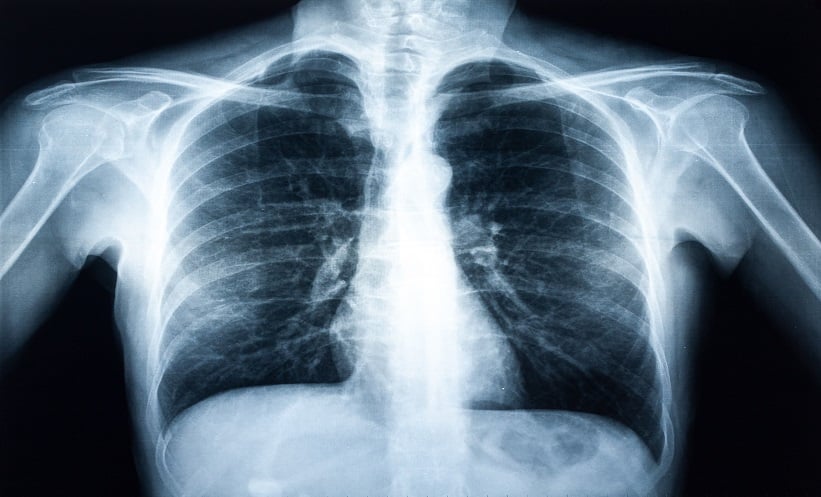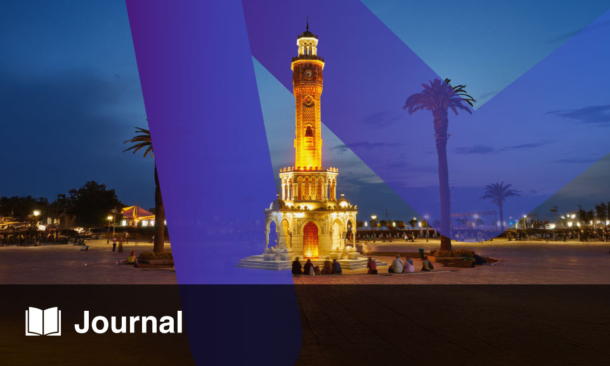Abstract
Gadolinium-based contrast agents (GBCA) have played a pivotal role in enhancing the diagnostic capabilities of MRI for several decades. The application of gadolinium as a contrast agent opened new possibilities for early diagnosis with greater accuracy of a wide range of conditions, including neurologic and vascular disorders, tumours, cancers, inflammation, and more. Gadolinium is a lanthanide metal known for its strong paramagnetic properties, which produce stronger signals in MRI. The presence of GBCAs in the body alters the magnetic properties of nearby water molecules, which changes the appearance of the organs or blood vessels containing contrast when the MRI images are taken. The safety of GBCAs has been widely studied in recent years. Gadolinium is generally considered a safe and relatively non-toxic contrast agent, according to many of these studies. Many clinical studies have also shown toxic effects, allergic reactions, and gadolinium deposition in different body tissues and the brain. The rare condition of nephrogenic systemic fibrosis in adult patients with renal dysfunction has been the most popular topic of research and the main concern amongst all other risks of post-GBCA use. This review explores various research papers regarding GBCAs and focuses on providing insight into how different types of GBCAs are commonly used today in MRI scans, their properties, clinical applications, safety concerns, and recent and possible future developments in this field of medical radiology.
Key Points
1. The use of gadolinium-based contrast agents (GBCA) in MRI has been associated with adverse effects, including free gadolinium deposition, nephrotoxicity, and allergic reactions in patients. This has raised concerns about their safety and led to the development of safer MRI contrast agents.2. In this study, applications of different GBCAs, related potential diseases, side effects, and accumulation of gadolinium were reviewed from numerous studies. Recent approaches and investigations in the development of safer MRI contrast agents were explored and discussed briefly.
3. GBCAs with a linear structure have higher risks despite their greater specificity and sensitivity. Macrocyclic GBCAs are safer and preferred, with generally low side effects, though efficacy can vary. Patients with kidney issues or frequent MRIs face higher risks. Guidelines based on the latest scientific findings are essential for improving patient safety.
INTRODUCTION
Gadolinium is an invaluable contrast agent in MRI that has various important benefits in radiology. Its unique magnetic properties allow for increased contrast in MRI images, making it easier to identify and better understand anatomical structures and pathologies. They are particularly very effective in detecting lesions as well as pathological changes in the central nervous system, cardiovascular system, and other body regions.1,2 This allows early and accurate diagnosis, appropriate treatment planning, as well as the monitoring of disease progression. Gadolinium-based contrast agents (GBCA) come in several forms, including linear and macrocyclic chelates, which are designed to increase the stability of gadolinium in the body and reduce the risk of toxic effects.3,4 Gadolinium contrast agents can be tailored to the needs of certain MRI examinations. Although gadolinium is generally considered safe, it is necessary to assess the risks of rare allergic reactions and the risk of accumulation in various body tissues. Several types of GBCA are available in today’s market, the most commonly used amongst them such as gadopentetate dimeglumine, gadobutrol, gadoterate meglumine, and gadofosveset trisodium have been reviewed and explored in line with their different application and safety profiles.
Gadopentetate Dimeglumine
Gadopentetate dimeglumine (commonly known by its brand name Magnevist [Bayer Radiology, Leverkusen, Germany]) was the first gadolinium-based contrast agent (GBCA) that became available in 1988 and is a widely used GBCA in medical imaging. It is a paramagnetic complex comprising gadolinium (Gd) ions chelated with diethylenetriamine penta-acetic acid (DTPA) and meglumine.5 This chelation enhances the stability and solubility of the compound, making it suitable for intravenous administration in imaging procedures. The presence of unpaired electrons in Gd ions allows for the manipulation of magnetic resonance signals, improving the visualisation of anatomical structures in MRI.6,7
Gadopentetate dimeglumine enhances tissue differentiation, aids lesion detection, and provides diagnostic and treatment information. It is used in neuroimaging, musculoskeletal imaging, cardiac imaging, body imaging, and angiography. In neuroimaging, it helps visualise brain and spinal cord lesions, peripheral vascular abnormalities, demyelination diseases, and malignant tumours.8,9 In musculoskeletal imaging, it improves the visualisation of soft tissue injuries, joint disorders, and tumours. For cardiac MRI, it evaluates myocardial perfusion, viability, and cardiac function. In body imaging, it recognises liver lesions, including hepatocellular carcinoma, abdominal tumours, and assesses renal function.10 In angiography, it is used for magnetic resonance angiography (MRA) to examine blood vessels. Gadopentetate dimeglumine-enhanced MRI showed great improvement in liver lesion detection and characterisation compared to unenhanced MRI scans. A study by Attyé et al.11 used gadopentetate dimeglumine to assess blood–brain barrier permeability in patients with multiple sclerosis.11 Dynamic contrast-enhanced MRI was used to monitor changes in barrier integrity. The results showed that gadopentetate dimeglumine can provide important information for evaluating disease progression and treatment response in patients with multiple sclerosis.12
While gadopentetate dimeglumine is generally safe, there are some potential risks associated with its use.13 Studies have demonstrated its efficacy while showing a low incidence of acute adverse effects, especially in paediatric patients, and its safety profile was further improved in patients under sedation.14 Compared to macrocyclic GBCAs, linear GBCAs have a less stable molecular structure, which increases the likelihood that they would extravasate i.e., leak out of blood vessels into surrounding tissues. Extravasation can cause tissue irritation, oedema, and possibly raise the risk of compartment syndrome, especially when it happens in high volumes.15 There have been reports of rare fatal reactions associated with their use, including laryngeal oedema, hypotensive shock, respiratory arrest, arrhythmia, and bronchospasm.16
The main concern is the development of nephrogenic systemic fibrosis (NSF) in patients with kidney problems.17 NSF is a rare but serious condition characterised by skin and organ fibrosis. Several studies during the last decade reported the deposition of gadopentetate dimeglumine in the brain tissues and other organs.18-27 Adverse reactions like allergies, headaches, or nausea have also been reported, so prompt recognition and management are important.28,29 To minimise these risks, the patient’s poor kidney function must be assessed before giving gadopentetate dimeglumine, and the use of the lowest effective dose was suggested in many studies.23,30
In March 2016, the European Medicine Agency (EMA) began reviewing the GBCAs at the European Commission’s request. Following the safety evaluation in 2017, the EMA recommended the suspension of the use of linear agents such as intravenous gadopentetate dimeglumine, gadoversetamide, and gadodiamide. However, gadopentetate dimeglumine intra-articular usage was still permitted under very specific guidelines. The EMA introduced these measures according to their scientific reviews suggesting greater risks of gadolinium retention from linear GBCAs compared to macrocyclic GBCAs. Proper patient selection, monitoring, and following safety guidelines can ensure the safe and effective use of this contrast agent in clinical practice.31
Gadobutrol
Gadobutrol (commonly known in the market as Gadovist [Bayer AG, Leverkusen, Germany]), approved by the FDA in 2015, is a widely used contrast agent in MRI, recognised for its safety and effectiveness in improving the visualisation of various tissues within the body, as evaluated by a large-scale study in 23,000 patients.32 It has also been found to be well-tolerated, especially in children even under the age of 2 years, further supporting its safety profile across different age groups.33 Specifically, it is highly beneficial for vascular and soft tissue imaging. Gadobutrol is a type of GBCA that belongs to the category of macrocyclic agents. One notable advantage of gadobutrol is its lower risk of causing NSF compared to other GBCAs. As a result, it is often the preferred choice for patients with compromised kidney function.34,35
A study conducted by Prince et al.32 showcased the excellent diagnostic performance and safety record of gadobutrol in contrast-enhanced MRI scans of the brain.32 The research involved a significant number of patients and revealed that gadobutrol consistently produced high-quality images, facilitating the accurate identification and characterisation of brain abnormalities. Additionally, it was observed that minimal occurrence of adverse events was associated with gadobutrol administration, further emphasising its safety in clinical settings. It was proven by studies that it is a safe and efficient GBCA for use in both MRI and MRA, enabling the visualisation of pathological lesions and abnormalities in vascular perfusion and flow across various body regions including the prostate.36,37,38 This includes a wide range of patients, such as term neonates, paediatric patients, adults of different age groups, and individuals with renal and hepatic impairment and cardiovascular disease.35
Gadobutrol can be detected in cerebrospinal fluid samples for extended periods of time, even in individuals with normal kidney function and an intact blood–brain barrier. This highlights its potential for use in the spinal canal. Clinical studies have shown that gadobutrol does not have any negative effects on kidney function, making it a safe contrast agent for patients with impaired renal function.39,40 Furthermore, there have been studies investigating the intrathecal use of gadobutrol, specifically in relation to examining cerebrospinal fluid dynamics and enhancing glymphatic flow in conditions like idiopathic normal pressure hydrocephalus.41 These studies aimed to determine the minimum effective dose required to gather diagnostic information, showcasing the potential of gadobutrol for such applications. The extensive research conducted supports its safety and effectiveness as a contrast agent for various patient populations and clinical scenarios. Very rare cases of adverse reactions, such as fatal anaphylactic reactions, have also been reported.42 Its strong stability, safety in cases of renal impairment, and potential for intrathecal use make it a valuable tool in diagnostic imaging.43
Gadoterate Meglumine
Gadoterate meglumine (commonly known as Dotarem [Guerbet, Villepinte, France]), an MRI contrast agent, received FDA approval in 2013. It is a paramagnetic compound that enhances the visibility of blood vessels, organs, and tissues during imaging, allowing for a more detailed and accurate diagnosis.44 In terms of effectiveness, gadoterate meglumine has been widely used and proven to be effective in improving the quality and diagnostic accuracy of MRI scans. It helps to enhance the visualisation of blood vessels and abnormalities, making it easier for healthcare professionals to identify and characterise various medical conditions.45,46
Regarding the safety aspects of gadoterate meglumine, it is considered a safe contrast agent when used appropriately.47 It has a favourable safety profile and is well-tolerated by most patients.48,49 However, as with any contrast agent, there are some potential risks and side effects, although they are rare. Previous studies have shown a few risks, which include allergic reactions, NSF in patients with severe kidney dysfunction, and the possibility of accumulation in brain tissue in patients with multiple administrations.44-46,50-52 Its stability plays an important role in selection. Safety can be dependent on the structure and stability of contrast agents. Gadoterate meglumine is a macrocyclic as well as an ionic agent, which supports higher thermodynamic and kinetic stability. The high molecular stability of the agent can minimise the risk of gadolinium release from the GBCA molecule.53,54 Gadoterate meglumine has gained a significant share of the USA market and continues to be a leading choice for radiologists, with no unconfounded cases of NSF reported. It is typically administered intravenously before an MRI scan. The dosage and administration method depend on the patient’s age, weight, and the specific imaging procedure being performed.55 Furthermore, gadoterate meglumine is compatible with most MRI equipment and does not interfere with the imaging process. It provides excellent contrast enhancement and allows for clear visualisation of anatomical structures and pathological abnormalities.
Gadofosveset Trisodium
Gadofosveset trisodium (also known as Vasovist [Bayer Schering Pharma AG, Berlin, Germany]), a gadolinium-based blood pool contrast agent, was approved by the FDA in 2008 for the evaluation of aortoiliac disease in adults.56 Gadofosveset trisodium has been used mainly in the MRA of the vascular system for the diagnosis of certain disorders of the heart and blood vessels. The agent showed to have a prolonged intravascular residence time, making it particularly useful for evaluating venous, dynamic, and functional vascular diseases with a single low-dose contrast injection.57 It is considered an ‘intravascular’ contrast agent due to its transient, reversible, and noncovalent binding to serum albumin.58 This property allows the contrast agent to circulate for 2–3 hours after intravenous injection, making it suitable for various imaging studies.56,59
Furthermore, gadofosveset trisodium has been compared with other contrast agents, such as gadobenate dimeglumine, showing similar safety profiles and comparable image quality in certain studies.60,61 Its prolonged plasma half-life and increased relaxivity due to its ability to bind reversibly to serum albumin and form small nanoparticles has been highlighted as a key feature, contributing to its prolonged imaging capabilities and potential applications as a negative contrast agent for discriminating metastatic from nonmetastatic lymph nodes.62,63 These unique properties of gadofosveset trisodium have been extensively studied and compared with other contrast agents, showcasing its potential advantages in specific imaging scenarios.64-66 It has been evaluated for its potential use in various medical conditions such as endometriosis, and in the preoperative evaluation of potential living kidney donors, demonstrating its versatility and potential clinical utility.67,68
Also, as a blood pool contrast agent, it has been explored in the context of equilibrium-phase MRA, demonstrating its potential to overcome challenges associated with suboptimal bolus timing during whole-body vascular imaging.69 Gadofosveset trisodium is a subject of research interest due to its unique properties as a blood pool contrast agent. Studies have highlighted many advantages and the potential use of this agent. Further research may continue to explore its utility and potential.
Recent Developments
Research in developing alternative MRI contrast agents is multidisciplinary and involves chemistry, materials science, and biomedical engineering. Recent research has emphasised the necessity for alternatives to GBCAs in MRI due to concerns regarding gadolinium retention and potential toxicity.70 While GBCAs have significantly improved MRI scans for over a few decades, issues such as gadolinium deposits in the brain and NSF have led to the exploration of new contrast agents.71-74 Various materials such as manganese, iron oxide, organic molecules as small peptides, silicon-based, fluorine-based, biodegradable, and various nanoparticles including those made from gold, carbon nanotubes, fullerenes, polymers, liposomes, and viral nanoparticles have been investigated in recent years.75
Manganese has been explored as an alternative to gadolinium due to its paramagnetic properties. Manganese-based contrast agents have shown promise as complementary agents for liver imaging, potentially serving as alternatives for specific imaging requirements.76 It has been one of the most promising and popular in research amongst the materials investigated for MRI contrast.77 Amongst paramagnetic GBCA, gadoxetate disodium (also known as primovist/eovist [Bayer Healthcare, Leverkusen, Germany)], is a hepato-specific contrast agent predominantly used for improved detection and characterisation of liver lesions, including hepatocellular carcinoma. Due to its hepatocyte-specific uptake and excretion through the biliary system, it can provide dynamic and hepatobiliary phase images.78,79 It offers unique advantages in liver MRI but has also shown challenges such as transient motion artifacts in many studies.80,81
Many efforts have also been directed towards developing gadolinium-free contrast agents, with endeavours to integrate gadolinium into nanostructures for enhanced MRI contrast imaging.82,83 These advancements aim to enhance the safety profile of contrast agents while upholding the efficacy in MRI scans. Nanoparticles, including those made from gold, carbon, or polymers, are being investigated for their potential as MRI contrast agents. These nanoparticles can be engineered to have tuneable properties and can be functionalised for targeted imaging applications.
Iron oxide nanoparticles have been investigated; most importantly, superparamagnetic iron oxide nanoparticles (SPIONs) have shown great contrast by altering the relaxation times of nearby water protons. Research is ongoing to improve their biocompatibility, imaging efficacy, and clearance from the body, which indicates a shift towards exploring novel contrast agents beyond gadolinium.84,85 Amongst SPION agents, ferumoxytol exhibited promise most recently as an alternative to GBCAs for vascular imaging.86 Ferumoxytol, a compound coated with carboxymethyldextran, was employed as a contrast agent on SPION.87 Unlike gadolinium, ferumoxytol has various features. Because of its impaired blood–brain barrier, it is a big agent that does not go through blood arteries to reach tumours quickly. While gadolinium agents improve the lesion after minutes, the lesion is enhanced one-day following injection. Ferumoxytol has a half-life of around 14 hours; this extended half-life enables the visualisation of tumour vasculature and the determination of the relative cerebral blood volume for tumours that may be malignant. Manganese is also a significant element in the body, enso dogenous mechanisms can remove it.56,82
Organic molecules like small peptides or nanoparticles are being explored as alternatives to GBCAs. These agents can be tailored to have specific targeting capabilities and can potentially reduce the risk of toxic effects associated with metal-based contrast agents. Inorganic molecules, such as silicon-based nanoparticles have also emerged with a potential alternative to GBCAs. These nanoparticles can be functionalised with targeting ligands and have shown improvements in preclinical studies.75,88 Their contrasting effects and unique properties could position them as viable substitutes for GBCAs in future.89 Fluorine-containing compounds that contain both organic and inorganic components are also being explored for their potentials as they can provide both positive and negative contrast that may offer advantages in terms of safety and imaging sensitivity. Fluorinated agents such as theranostics have been extensively investigated for diseases like pulmonary embolism, inflammatory diseases, and cancer.90,91
Biodegradable materials that can be easily cleared from the body after imaging have also shown promise in the development of contrast agents. These agents aim to minimise long-term retention and potential toxic effects. The research on biodegradable contrast agents is diverse and promising, with studies focusing on various aspects such as cancer detection, immune response tracking, and the development of biodegradable macromolecular contrast agents.92,93
Recent studies worked on dosage reduction together with improved lesion characterisation, clinical efficacy, and increased relaxivity.87 Gadoquatrane, a newly developed contrast agent based on tetrameric gadolinium, has significantly improved stability and relaxation.94,95 With one gadolinium ion and a non-ionic macrocyclic GBCA structure, the recently developed agent gadopiclenol was made by Robert P et al.96 with the goal of producing T1 relaxivity that is two to three times higher than that of existing gadolinium factors without sacrificing any of their physical properties. After five months of gadopiclenol treatment, the amount of gadolinium deposited in the cerebellum is comparable to that of macrocyclic gadobutrol.97 This new agent gadopiclenol (marketed as elucirem [Guerbet, Villepinte, France]), was tested on animals to see if there is cerebral deposition. It incorporates a phenyl group into DO3A, resulting in the relaxation time of Gd-DOTA without phenyl group alteration.98,99
To conclude, recent research focused on understanding their mechanisms of toxicity, distribution in the body, potential neurotoxic effects, and exploring alternative contrast agents to address safety concerns. These studies contribute to the ongoing efforts to improve the safety and efficacy of contrast agents used in MRI.
DISCUSSION
The field of MRI contrast agents is evolving, and scientists have been dedicated to the development of safer GBCAs that minimise the potential for negative impacts. A noteworthy advancement in this pursuit has been the introduction of macrocyclic chelates, which are generally linked to decreased rates of gadolinium release.100,101 Gadolinium-based contrast agents continue to serve as exceptional tools in diagnostic imaging. They allow for enhanced visualisation of anatomical structures and pathologies in MRI scans. Numerous studies have demonstrated the positive impact of GBCAs on MRI images by improving specificity, sensitivity, and visibility. This is achieved by modifying the inherent properties of tissues, leading to a significant increase in signal intensity through binding to serum proteins and creating a noticeable contrast. However, the safety profile of GBCAs, particularly in patients with renal impairment, remains an ongoing area of research and debate. While newer and safer agents are being developed, clinicians must carefully assess the risk–benefit ratio when utilising GBCAs in their medical practice.102
Gadopentetate dimeglumine was a widely used contrast agent in MRI scans before the suspension, improving accuracy in liver and brain imaging. Multiple studies support its effectiveness.11,103 However, caution must be exercised due to the risks associated with GBCAs, particularly nephrogenic systemic fibrosis in patients with kidney issues and dialysis.86 Patients with sickle cell disease may be at higher risk of potential oxidative stress and vascular complications, and in such cases, macrocyclic GBCAs are preferred, although there is no evidence of adverse effects such as intra-vascular problems or haemolytic events induced by GBCAs in patients with sickle cell disease.104 Proper patient selection, monitoring, and adherence to safety guidelines are vital for the safe use of this contrast agent. While the risk of compartment syndrome from GBCAs is relatively rare, it is higher with linear GBCAs, especially when there is extravasation, high dosage administration, or impaired patient venous access. Minimising this risk requires close monitoring of the injection site and the use of proper injection procedures.
Both gadoterate meglumine and gadobutrol are GBCAs with comparable safety profiles, efficacies, and macrocyclic chemical structures. When it comes to gadolinium retention, macrocyclic GBCAs are regarded as safer than linear GBCAs.105 The likelihood of gadolinium being released from the complex and remaining within the body is reduced by the macrocyclic structure. As such, macrocyclic agents are usually preferred when choosing GBCAs for an MRI scan, especially for patients who are more likely to retain gadolinium, such as those with compromised renal function.106
Alternative contrast agents, such as those based on manganese, are being developed in an ongoing effort to offer comparable diagnostic capabilities without the same safety issues.107 Although GBCAs are generally known to be safe, there are growing worries regarding possible side effects, especially in patients with compromised renal function. In these patients, the usage of GBCAs is linked to NSF, a rare but dangerous syndrome.23,30 Furthermore, although the clinical implications of this discovery are still uncertain, various recent investigations have raised doubts about the deposition of gadolinium in various tissues.98,108
Numerous research studies have also demonstrated the presence of gadolinium deposition in various organs of the human body. This occurs as a result of the release of free gadolinium into different organs and tissues, which has raised concerns about the use of gadolinium agents. The focus of this study was to investigate potential diseases and side effects associated with the accumulation of gadolinium in the patient’s body, particularly in organs such as the brain and bones where gadolinium deposition has been observed. The study also explored the development of new contrast agents that do not contain gadolinium or the invention of next-generation gadolinium agents, with the aim of enhancing their safety and effectiveness. One of the diseases associated with gadolinium retention is NSF, while another is gadolinium deposition disease (GDD).96,109
GBCAs continue to be popular in medical imaging, specifically in MRI scans, to enhance the contrast of images and improve the accuracy of diagnosis. These agents contain paramagnetic ions that aid in producing clearer images. In order to prevent the toxicity of free gadolinium ions, they are bound to organic ligands, forming stable chelates called Gd+3 chelates. This process reduces the release of free gadolinium ions and prevents their interaction with endogenous anions like CO3-2 and PO4-3 which could potentially result in the formation of insoluble compounds in the bloodstream and their accumulation in tissues.110 GBCAs do not worsen renal insufficiency and are generally considered safe. Nonetheless, mild adverse reactions may occur following their administration, including nausea, vomiting, discomfort at the injection site, headache, and dizziness. Evidence exists in a few cases that confirms the presence of gadolinium deposits in various tissues such as bone, kidneys, brain, skin, and lymph nodes. The specific nature of these deposits is still unknown, and currently, there is no evidence linking gadolinium accumulation to direct tissue damage.
However, research studies have documented specific disorders associated with the retention of gadolinium, which include hypersensitivity reactions, NSF, and GDD.111-114 These conditions are uncommon and typically manifest in individuals who have pre-existing risk factors or compromised kidney function.
From the review of many studies, reports of acute and chronic adverse effects and notable concerns about GBCAs have been seen. Severe conditions like NSF, which affects people with significant kidney dysfunction and dialysis; concerns about potential long-term effects due to gadolinium retention in tissues like the brain and bones; mild-to-severe allergic reactions that require careful patient screening and monitoring; recommendations for cautious use of GBCAs during pregnancy, while breastfeeding has been deemed safe; paediatric patients are advised to use GBCAs with caution due to potential risks; GDD and any potential cancer risks are still being investigated in ongoing research for further evidence and understanding.
To reduce potential risks, it is advised to administer the lowest effective dose of GBCAs, particularly in patients with impaired renal function. The dosage calculation of GBCAs should be individualised, considering factors like age, renal function, and imaging needs. By adhering to established guidelines and incorporating the latest research on safety and efficacy, healthcare providers can optimise GBCA use while minimising risks.
The EMA guidelines provide specific dosing recommendations for various patient groups, with dosage generally calculated based on (volume) body weight for both paediatric and adult patients. Dosage recommendations can vary depending on the specific agents. Gadobutrol and gadopentetate dimeglumine are recommended at 0.1 mmol/kg body weight, equivalent to 0.1 mL/kg body weight for a 1.0 M solution in paediatric and adult patients. For gadoterate meglumine, the recommended dose is 0.1 mmol/kg body weight, equivalent to 0.2 mL/kg body weight for a 0.5 M solution in paediatric patients including term neonates, and adults. In MRA, a dose of up to 0.3 mmol/kg body weight, or 0.6 mL/kg body weight, may be used. Gadofosveset trisodium is specifically recommended for MRA of blood vessels in adults, with a dosage of 0.03 mmol/kg body weight, equivalent to 0.12 mL/kg body weight of a 0.25 M solution. Additionally, higher doses of GBCAs have been shown to improve the detection rate of brain metastases.115 Nonetheless, it is crucial to balance the enhanced imaging benefits with the potential risks of gadolinium deposition and toxicity.
The advantages and drawbacks of employing GBCAs must be carefully evaluated. Patients, especially those at higher risk, must be monitored to ensure their safety during diagnostic procedures. As research progresses, these advancements in alternative contrast agents, along with a deeper understanding of their complexities, are anticipated to play a significant role in providing clinicians with the ability to better optimise imaging protocols and ensure accurate diagnostic outcomes.
The review was carried out on multiple previous studies, and one notable limitation of this review is that it incorporates some findings from certain studies that were published without undergoing a comprehensive scientific review process. While these papers provided valuable insights, the authors believe they require further study and analysis. Future work and the next step from this review is to conduct a detailed study and review of each type of GBCA individually, with a particular focus on safety concerns, to contribute to the development of safer MRI contrast agents.







